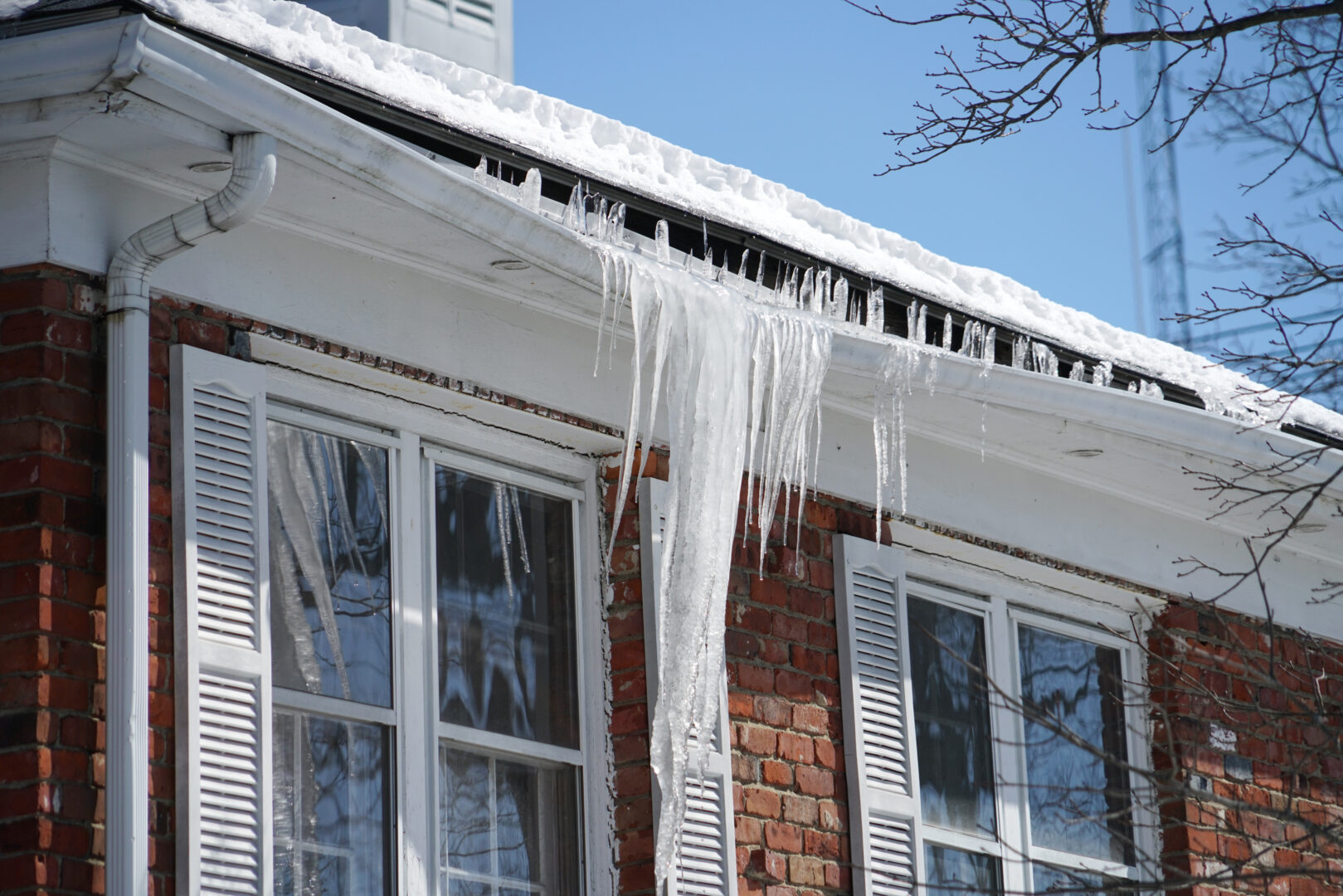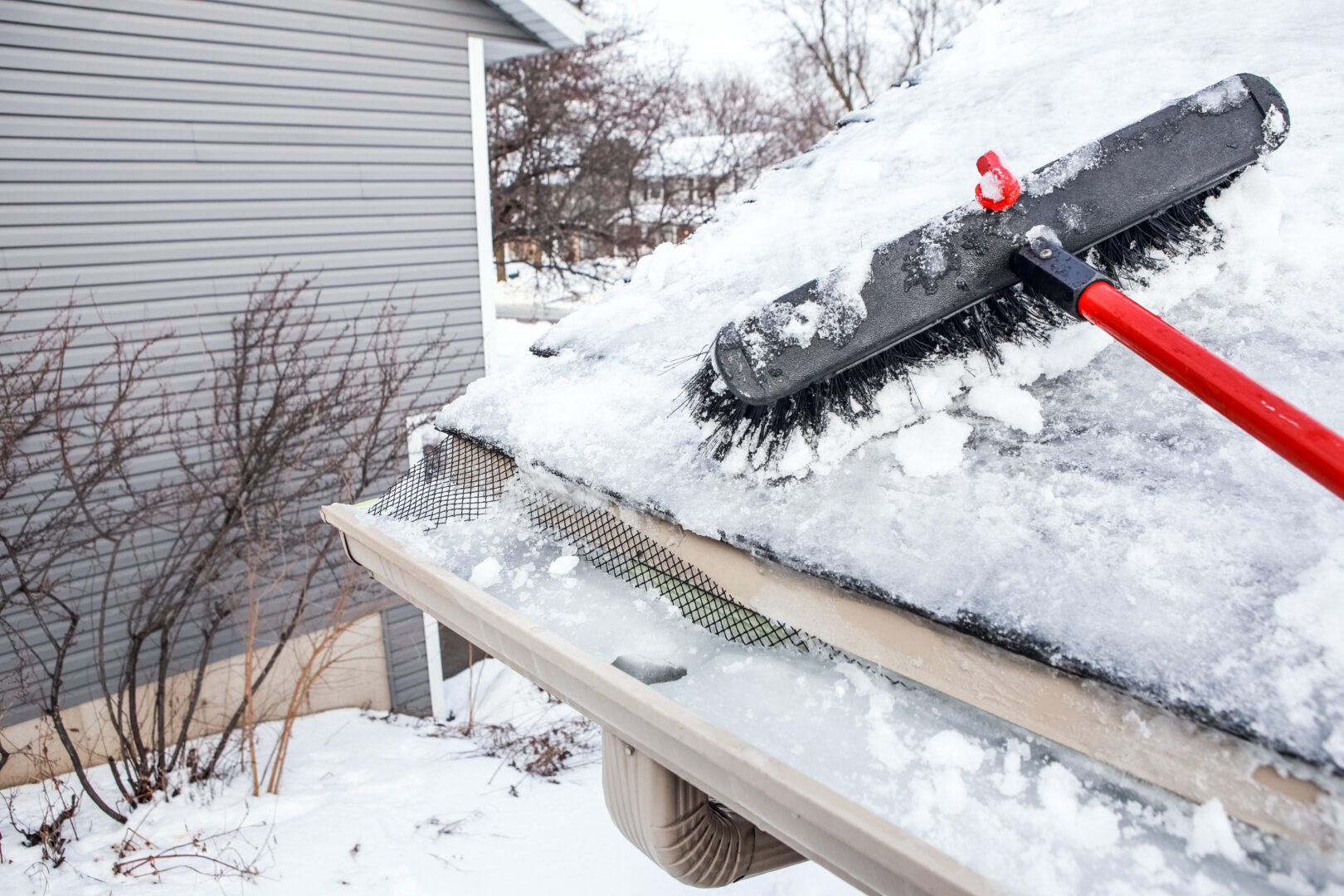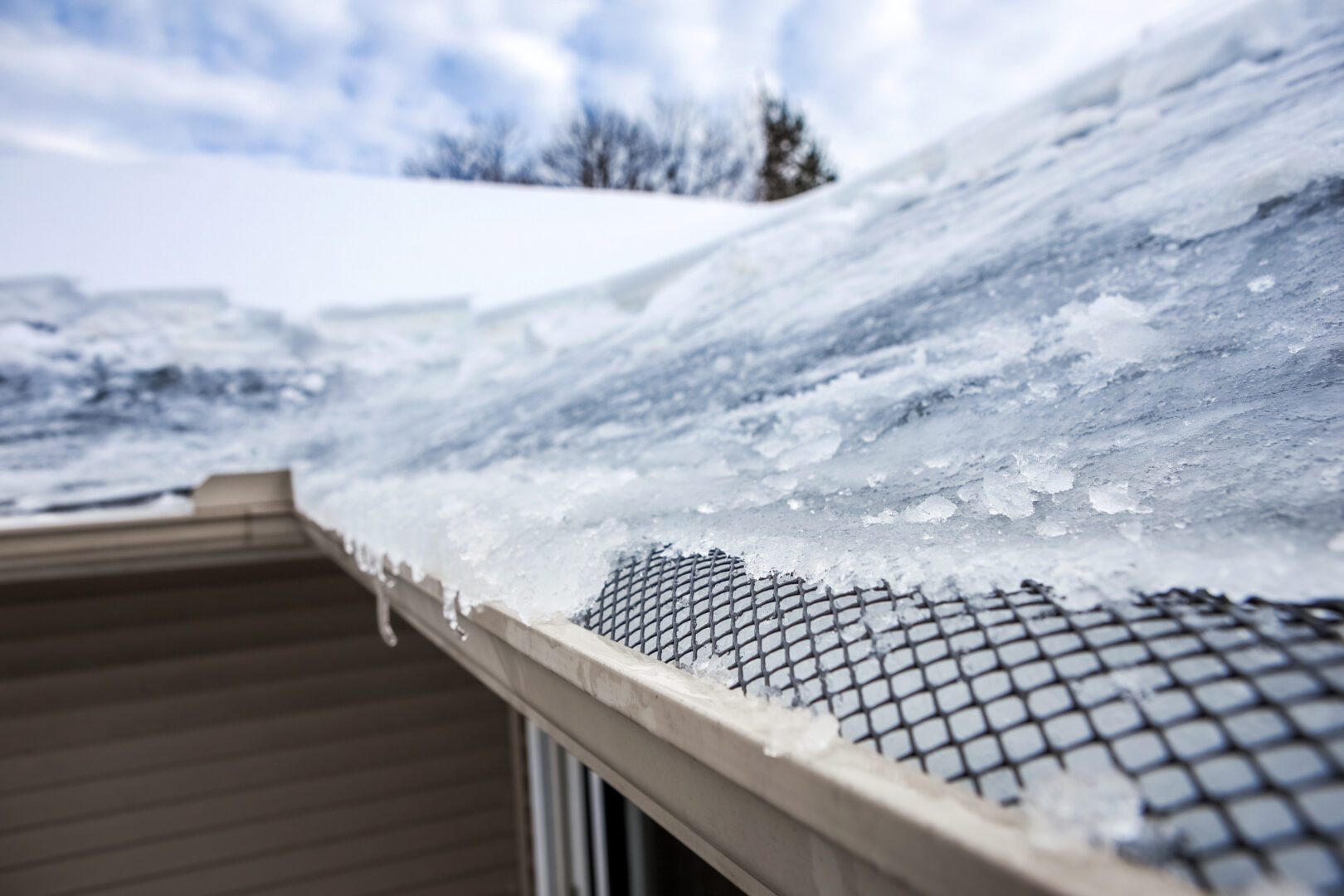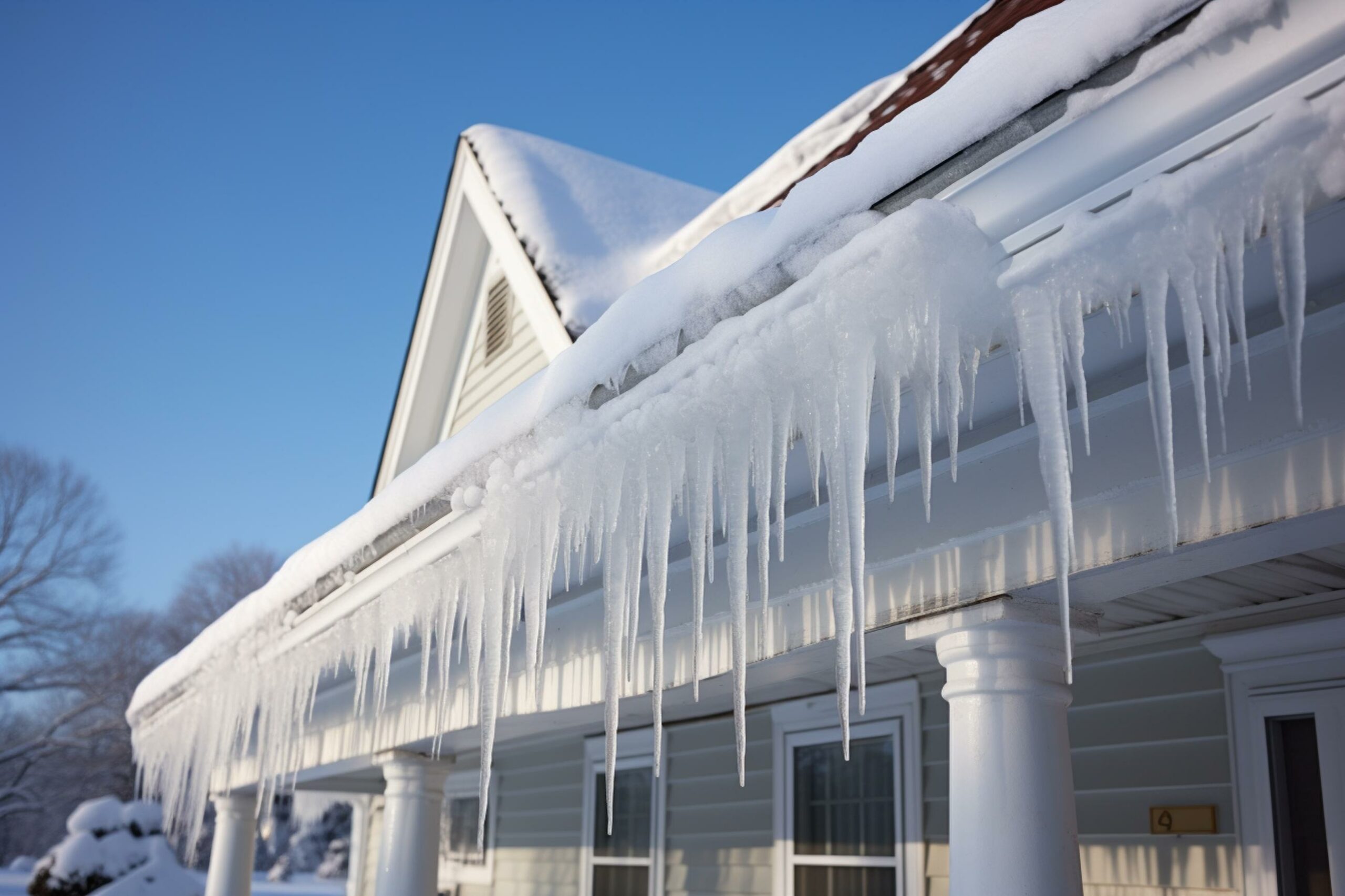As the brisk air gets colder and colder, many people begin preparing their homes and vehicles for the upcoming winter. As anyone who has spent a winter up north knows, there is one thing that you can never escape: snow.
The picturesque snowfall that blankets homes in the winter often comes with a costly downside – ice dams. As majestic as fresh snow may appear atop the rooflines of houses, this accumulated frozen precipitation frequently transforms into destructive ice dams along the edges of roofs. Left unaddressed, these hazardous buildups of ice can lead to catastrophic damage and expensive repairs for homeowners.
In this article, we will explore what exactly ice dams are, how they form, and the headaches they can cause if preventative measures are not taken. We will provide homeowners with expert guidance on proactively avoiding ice dams through proper insulation, ventilation, roof maintenance, and snow removal. Finally, we will outline the recommended techniques for safely removing existing ice dams, and the typical costs associated with rectifying the unfortunate damages they often inflict on homes.
What Are Ice Dams?
An ice dam is a buildup of ice that forms on the edge of a roof, typically at the gutters or near the walls of the house. As snow accumulates on the roof and starts to melt, the water runs down the roof until it reaches the colder eaves that surround the gutters. Here, the water refreezes, forming a dam that blocks water from draining off the roof.
Behind this ice dam, melting snow and ice are trapped, allowing water to back up under the shingles. As this water accumulates, it can leak into the attic, walls, and ceilings, leading to damage.

Ice dams are most common after heavy snowfalls followed by warmer days. They tend to form when an attic is poorly insulated or ventilated, causing heat loss through the ceiling that melts the snow on the roof above. This is why ice dams often develop after only one portion of the roof has been cleared of snow. The areas with remaining snow stay cold, while heat escaping from the attic melts snow on the cleared areas, allowing the water to pool and refreeze at the snow line.
What Types of Roof Are More Prone to Ice Dams?
Ice dams can form on almost any type of roof, regardless of material or style. However, certain roofs are more prone to serious ice dam issues based on their design:
- Asphalt Shingles: The dark colors of asphalt shingle roofs absorb heat, leading to increased snow melt. Shingles also provide plenty of crevices for melted water to seep under and freeze into ice dams.
- Standing Seam Metal Roofs: The slick surfaces of standing seam metal roofs allow snow and ice to easily slide off, however, the remaining snow can melt at seams and refreeze. Low-slope metal roofs under 2:12 pitch are at high risk – though generally speaking, metal roofs are better off than most.
- Tile or Slate Roofs: The irregular surfaces of tile and slate roofs can catch and hold snow. Valleys, seams, and protruding edges provide areas where melted snow refreezes into dammed ice.
- Flat Roofs: Without sloped drainage, flat roofs allow pooling water from snowmelt to readily turn into large ice sheets. The roof edges are prone to hazardous overhangs.
- Skillion Roofs: Their single-slope design encourages snow and ice buildup focused along one edge, leading to heavy ice dams on the lower incline.
No roof type is immune to ice dams. However, being aware of which roofs are most vulnerable can help homeowners be vigilant about prevention and monitoring for problems.
How To Prevent Ice Dams
Ice dams can wreak havoc on roofs during winter, causing damage to both the structure and the interior of homes. To mitigate this risk, effective ice dam prevention strategies are crucial. By understanding the factors that contribute to ice dams and implementing preventative measures, homeowners can safeguard their properties from the potential consequences of these icy barriers.

The best way to avoid ice dams is through proper home insulation, ventilation, and roof maintenance. Here are some tips for prevention:
- Improve Attic Insulation: Ensure your attic has at least 12-15 inches of insulation. This minimizes heat loss through the ceiling to melt snow on the roof.
- Increase Attic Ventilation: Ridge vents, soffit vents, and gable vents help remove hot air from the attic, limiting how much heat escapes through the roof.
- Install Roof Deicing Cables: Also called roof heating cables, these are designed to melt snow and ice and channel water off the roof before dams form. They are affixed to the roof’s edge and plugged into an outdoor outlet.
- Use Ice Dam Membrane: This material is applied by roofers along the eaves during roof construction or replacement. It helps block melted snow from seeping under shingles and refreezing.
- Clear Snow After Major Snowstorms: Removing snow off the roof minimizes areas where melting and refreezing can occur. Use a roof rake to clear at least 3 feet up from the roof’s edge.
- Trim Overhanging Trees: Eliminate branches that cling to the roof’s edge and trap snow. This allows sunshine to help melt and dry the roof after snowstorms.
In addition to these tips, consider running through a roof winterization checklist to better prepare for the impending cold weather. Following best practices and keeping your roof clear as much as possible during the winter can drastically decrease the risk of damage.
Common Ice Dam Damages
When ice dams cause leaking and water damage, it can be extensive and costly if left unaddressed. Here are some common issues caused by ice dams:
- Water Stains on Interior Ceilings and Walls: Water seeping through can leave unsightly stains as well as damage drywall and plaster.
- Peeling Paint, Buckled Walls and Ceilings: Leaking water damages materials and causes them to deteriorate. Sheetrock can buckle and paint can bubble up and peel away.
- Rotting Roof Sheathing and Rafters: Sustained leakage rots and weakens roof framing if water is allowed to sit against wood sheathing and rafters under the shingles.
- Mold Growth: Water leakage encourages mold growth in attics, which can pose health hazards and ruin insulation.
- Ice Dam Flash Flooding: If a heavy ice dam suddenly releases a pool of trapped water, it can cause water to rush through the interior, soaking materials not designed to withstand standing water.
How To Remove Ice Dams
Addressing ice dams promptly is essential to prevent the aforementioned water damage and structural issues. Exploring effective methods of ice dam removal becomes imperative for homeowners seeking to safeguard their properties from the seasonal challenges of freezing temperatures.

If ice dams have already formed and are causing leakage and interior damage, they will require prompt removal and repair:
- Carefully Chip Away Ice: Use a flat shovel to gently pry and break up ice, working from the bottom edge up. Aim to create drainage channels in the dam so water can flow off the roof. Wear proper protective gear.
- Apply Calcium Chloride: These specially formulated pellets or flakes help melt through ice dams. Apply a small amount and give it time to work so melting doesn’t overwhelm gutters.
- Install Heating Cables: Lay cables along problem roof edges so they can melt channels through existing dams and keep new ice from forming.
- Improve Interior Drainage: Add extra insulation in the attic and clear weep holes in exterior walls so that incoming water has somewhere to drain immediately, before soaking into interior materials.
- Make Required Repairs: Fix all water damage, including dried materials, buckled sheetrock, mold removal, new insulation, etc. A roofer can ensure any compromised roofing materials are also replaced.
Average Cost of Removing Ice Dams
Because the extent of the damage and required repairs can vary greatly, so does the cost of addressing ice dams. Here are some ballpark figures:
- Minor Ice Dam Chipping & Shoveling – $200-$500
- Chemical Ice Melting Treatment – $150-$300
- Installation of Heating Cables – $1,500-$2,500
- Repairing Water-Damaged Drywall – $300-$1,000
- Painting Water-Stained Ceilings & Walls – $200-$700
- Replacing Water-Damaged Insulation – $1,000-$2,000
- Roof Sheathing Repairs – $2,000-$5,000
- Attic Mold Remediation – $1,000-$5,000
Preventing ice dams through proper insulation and roof maintenance is far less costly than repairing the damages they cause. Homeowners suspecting or noticing an ice dam issue should take prompt action to mitigate risks of substantial leakage and interior destruction.
Conclusion
With the right prevention and response measures, ice dams do not need to spell disaster for homes and businesses. By stopping ice dams before they start and acting swiftly at the first sign of their development, the expenses and headaches caused by these frozen menaces can be kept to a minimum this winter.
Need help getting rid of ice dams on your roof? For help with ice dam prevention and removal, don’t hesitate to reach out – as your trusted local Vermont roofing and ice dam removal company, we’re here to help.
